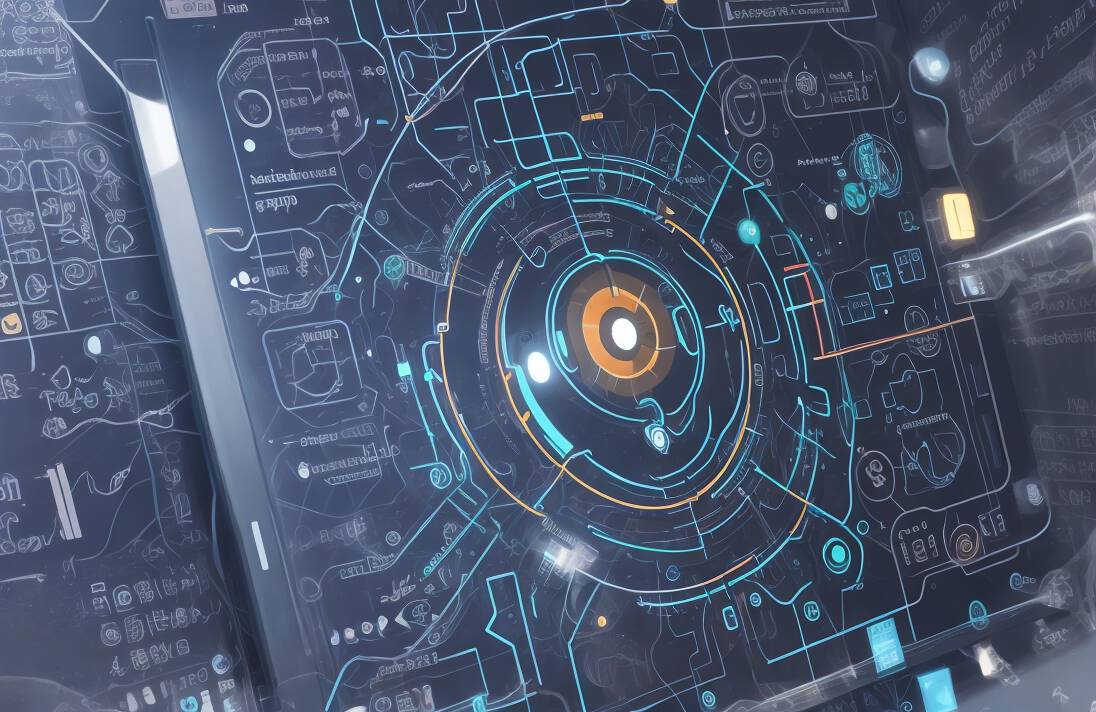
- August 25, 2023
- allix
- Research
In artificial intelligence (AI), few frontiers have captivated our imagination as profoundly as computer vision. This cutting-edge field endeavors to equip machines with the ability to interpret and understand the visual world, a feat that mirrors human visual perception. At the core of this advancement are AI algorithms specifically designed for computer vision tasks, from image recognition to object detection and image segmentation.
Artificial intelligence in the realm of computer vision is akin to teaching machines how to see, interpret, and comprehend the visual world around them. Computer vision has transcended mere image processing to a state where machines can extract meaning, context, and patterns from images and videos. The transformation of pixels into insight, shapes into objects, and colors into emotions has been made possible through a symphony of AI algorithms tailored for the unique challenges of visual interpretation.
The complexity of human vision serves as both inspiration and challenge. While humans can effortlessly identify objects, scenes, and emotions in images, recreating this nuanced understanding in machines requires intricate algorithms that simulate the cognitive processes involved in visual perception.
At the forefront of computer vision lies image recognition, a task that encompasses the machine’s ability to identify and label objects within images. Image recognition, also referred to as image classification, is a fundamental building block that underpins numerous applications, ranging from content sorting on social media to aiding medical diagnoses.
Convolutional Neural Networks (CNNs) serve as the backbone of image recognition algorithms. These deep learning architectures are meticulously designed to process grid-like data, making them especially adept at handling images. CNNs utilize convolutional layers to extract local features, capturing everything from basic edges to intricate textures. As these layers progress through the network, they learn to recognize increasingly complex and high-level features, mimicking the hierarchical processing that occurs in the human visual cortex.
Transfer learning, a technique that leverages pre-trained models, has revolutionized the landscape of image recognition. By utilizing models trained on vast datasets, researchers can capitalize on the learned features and adapt them to specific tasks. This approach not only expedites the training process but also yields remarkable performance, even with limited training data.
Real-world examples of image recognition algorithms in action abound. Consider medical diagnostics, where AI algorithms analyze medical images to identify potential anomalies, assisting doctors in making accurate diagnoses. In agriculture, these algorithms help identify plant diseases from images captured in the field, enabling farmers to take timely action to protect their crops. Image recognition also plays a pivotal role in the automotive industry, with advanced driver assistance systems using algorithms to identify pedestrians, road signs, and obstacles.
Object Detection

Image recognition, while impressive, often falls short in scenarios that demand a deeper understanding of visual content. Object detection steps in to address this limitation by enabling machines not only to recognize objects but also to locate them within an image. This task is particularly critical for applications such as autonomous vehicles, surveillance systems, and robotics, where precise knowledge of object positions is essential.
Faster R-CNN (Region Convolutional Neural Network) stands as a groundbreaking algorithm in the realm of object detection. This approach seamlessly integrates region proposal networks with object classification networks. The initial stage involves generating potential regions containing objects, followed by the refinement and classification of these regions. By employing a two-stage process, Faster R-CNN achieves exceptional accuracy in detecting objects, making it a pivotal advancement in the field.
For instance, consider an autonomous delivery robot navigating a busy urban environment. Object detection algorithms would enable the robot to identify pedestrians, vehicles, and obstacles in real time, ensuring safe and efficient navigation. In retail, these algorithms are employed to track inventory levels, optimizing supply chain management and enhancing customer experience.
Image Segmentation
Image segmentation elevates the scope of visual understanding by not only identifying and locating objects but also segmenting images into regions with distinct semantic meaning. This task assigns a label to each pixel, effectively creating a detailed map of objects and their boundaries within an image.
Fully Convolutional Networks (FCNs) are the cornerstone of image segmentation algorithms. These architectures adopt an encoder-decoder structure, where encoder networks extract high-level features and decoder networks restore spatial resolution. By producing pixel-wise predictions, FCNs enable pixel-level accuracy in segmenting objects, a feat that holds immense significance in applications such as medical image analysis and scene understanding.
Image segmentation algorithms aid in delineating organs and structures, providing invaluable assistance to radiologists and clinicians. Autonomous drones equipped with image segmentation capabilities can effectively survey disaster-stricken areas, identifying areas of damage and guiding rescue efforts.
Examples of Computer Vision in Practice
Computer vision algorithms have found their way into numerous practical applications across diverse industries. In the medical field, AI-powered diagnostic tools analyze medical images, assisting healthcare professionals in detecting diseases such as cancer and identifying abnormalities that might be overlooked by human eyes.
In the automotive sector, computer vision is an integral component of advanced driver assistance systems (ADAS). These systems utilize cameras and sensors to identify pedestrians, cyclists, road signs, and other vehicles, contributing to enhanced safety on the roads. Moreover, computer vision algorithms play a pivotal role in the evolution of self-driving cars, enabling vehicles to interpret their surroundings and make real-time decisions.
Retail businesses leverage computer vision to optimize their operations. Facial recognition technology is used for customer identification and personalized shopping experiences. Computer vision algorithms can also analyze customer behavior and preferences by tracking movements and interactions within stores, helping retailers tailor their strategies accordingly.
Security and surveillance benefit greatly from computer vision algorithms. Video analytics systems employ object detection and tracking algorithms to identify suspicious activities in crowded areas, enhancing public safety. Similarly, smart cities utilize computer vision to monitor traffic flow, manage public spaces, and ensure efficient urban management.
Artificial intelligence algorithms in computer vision are not limited to industries; they have permeated our daily lives through applications like social media filters and augmented reality apps. The filters that overlay animal ears or change backgrounds in video calls are powered by computer vision algorithms that recognize and manipulate faces and scenes in real time.
Innovations on the Horizon
As technology continues to evolve, the future of computer vision holds exciting possibilities. Innovations such as 3D computer vision aim to create three-dimensional models of objects and scenes from 2D images. This has applications in fields like robotics, virtual reality, and augmented reality, where accurate depth perception is essential.
Combining computer vision with other AI disciplines like natural language processing could lead to even more sophisticated systems. Imagine a system that not only recognizes objects in images but also comprehends the context and generates natural language descriptions of the visual content.
Edge computing, where AI processing happens on devices rather than in centralized servers, is poised to revolutionize computer vision applications. This approach reduces latency, enhances privacy by processing data locally, and enables real-time decision-making in scenarios where connectivity is limited.
Categories
- AI Education (37)
- AI in Business (62)
- AI Projects (85)
- Research (57)
Other posts
- The Complete List of 28 US AI Startups to Earn Over $100 Million in 2024
- Keras Model
- Scientists Develop AI Solution to Prevent Power Outages
- NBC Introduces AI-Powered Legendary Broadcaster for Olympic Games
- Runway Introduces Video AI Gen-3
- Horovod – Distributed Deep Learning with TensorFlow and PyTorch
- Research Reveals Contradictory Positions Of AI Models On Controversial Issues
- Using AI to Understand Dog Barking
- The Autobiographer App Uses Artificial Intelligence To Record Your Life Story
- Chainer – Dynamic Neural Networks For Efficient Deep Learning
Newsletter
Get regular updates on data science, artificial intelligence, machine



